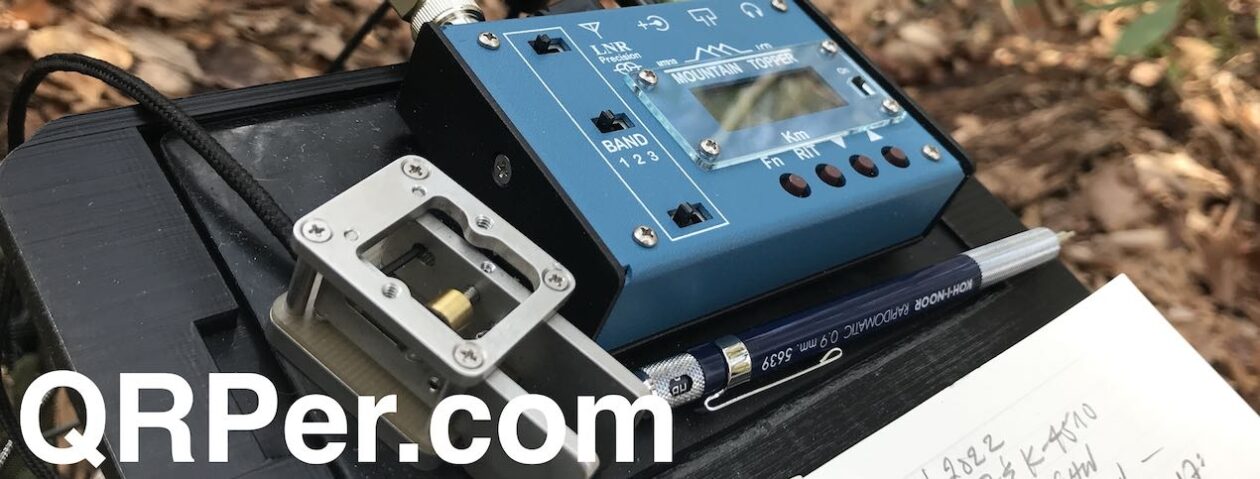Shortly after acquiring a lab599 Discovery TX-500 earlier this year, I did what I always do: invest an insane amount of time in researching and configuring a dedicated field radio kit.
As I’ve mentioned numerous times, I’m a serious pack geek, so this is incredibly fun for me even though the choice is often difficult.
I like to buy packs and cases from manufacturers in the US and Canada when possible, so started searching through all of the options.
Requirements

I wanted a pack that was compact, versatile, and offered proper padding (even knowing the TX-500 is a rugged little transceiver). I don’t handle my packs with kid gloves, so I expect them to cope with sometimes rough field conditions and still protect the gear inside. I also like a certain level of organization inside the pack.
I wanted the kit to be relatively compact, but large enough to hold the transceiver, all accessories and connections, logging pad and pencil, paddles, a proper arborist throw line, portable ATU, and a 3Ah LiFePo4 battery. A the end of the day, I wanted this TX-500 field kit to be fully self-contained.
For more on my field radio kit strategies and philosophies, check out Part 1 and Part 2 of my Anatomy of a Field Radio Kit series.
In the end, I adopted a pack with which I’m already very familiar…
The Red Oxx Micro Manager

Red Oxx is my favorite pack company and if you’ve been a reader for any length of time, you’ve obviously seen a number of their bags and packs in my field reports.
Back in 2016, when they introduced the first iteration of the Micro Manager EDC bag, they actually reached out to me–as an existing customer–knowing that I had been looking for a good radio pack with proper padding (many packs don’t require side padding and internal padding). They sent me a prototype of the Micro Manager for my feedback and then incorporated some of my suggestions.

I ended up using the Micro Manager as my dedicated Elecraft KX2 field kit which served me very well during the National Parks On The Air (NPOTA) event.
I also purchased a Micro Manager for my wife who quickly turned hers into a mobile art studio!


Much like my buddy Steve (AC5F)–whose XYL creates some amazing water color art in the field–my wife (K4MOI) is also an artist and loves to paint/draw during park and summit activations. Her art kit is always at the ready and she’s traveled with it extensively over the past five years.
The Micro Manager is a pack carried over the shoulder, much like a messenger or laptop bag. Those times when my field activations require a lengthy hike, I’ve simply pulled all of the items out of the Micro Manager (since I do modular packing, this is super easy), else I’ve even been known to stick the entire Micro Manager pack into a backpack!
Over the years, Red Oxx has made iterative upgrades to the Micro Manager including a pleated front pocket, slip-in external pocket, and they started lining the internal pocket with a more flexible and thinner dense foam padding. The new padding not only fits the TX-500 better than the first Micro Manager version did, but I believe it will have enough dimension to accommodate the TX-500 battery pack when that’s available next year.
 Inside the Micro Manager I also use a Tom Bihn Large Travel Tray to hold all of the TX-500 accessories: key, microphone, ATU, battery, and cables.
Inside the Micro Manager I also use a Tom Bihn Large Travel Tray to hold all of the TX-500 accessories: key, microphone, ATU, battery, and cables.
I own a number of these large travel trays and highly recommend them. I especially like the ballistic nylon versions for radio kits as they open and close so smoothly.
Video tour
I made a short video tour of the TX-500 Micro Manager kit before a recent activation at Table Rock:
TX-500 Micro Manager Kit Contents:
- lab599 Discovery TX-500
- Packtenna Mini EFHW antenna
- MFJ-1984LP End Fed Half Wave
- CW Morse “Pocket Paddle” (single lever version)
- Red Oxx Micro Manager
- Bioenno 3 aH LiFePo Battery (Model BLF-1203AB)
- Weaver arborist throw line/weight and storage bag
- Tom Bihn Large Travel Tray (black, 210 ballistic nylon)
- Rite In The Rain Weatherproof Cover/Pouch (affiliate link)
- Rite In The Rain Notepad (affiliate link)
- Jovitec 2.0 mm Mechanical Pencil (affiliate link)
- Muji A6 Notepad (affiliate link)
I’ve used this pack for a number of field activations and couldn’t be more pleased. Looking back at the contents, it’s funny: the pack and almost every single item inside (save the notepad and pencil) are made in the USA while the radio is made in Russia! A bit of international harmony going on here!
If you have a field pack for the TX-500 (or any radio), I’d love to know more about it. Please consider commenting with details or even submitting a guest post with photos!
73,
Thomas (K4SWL
































